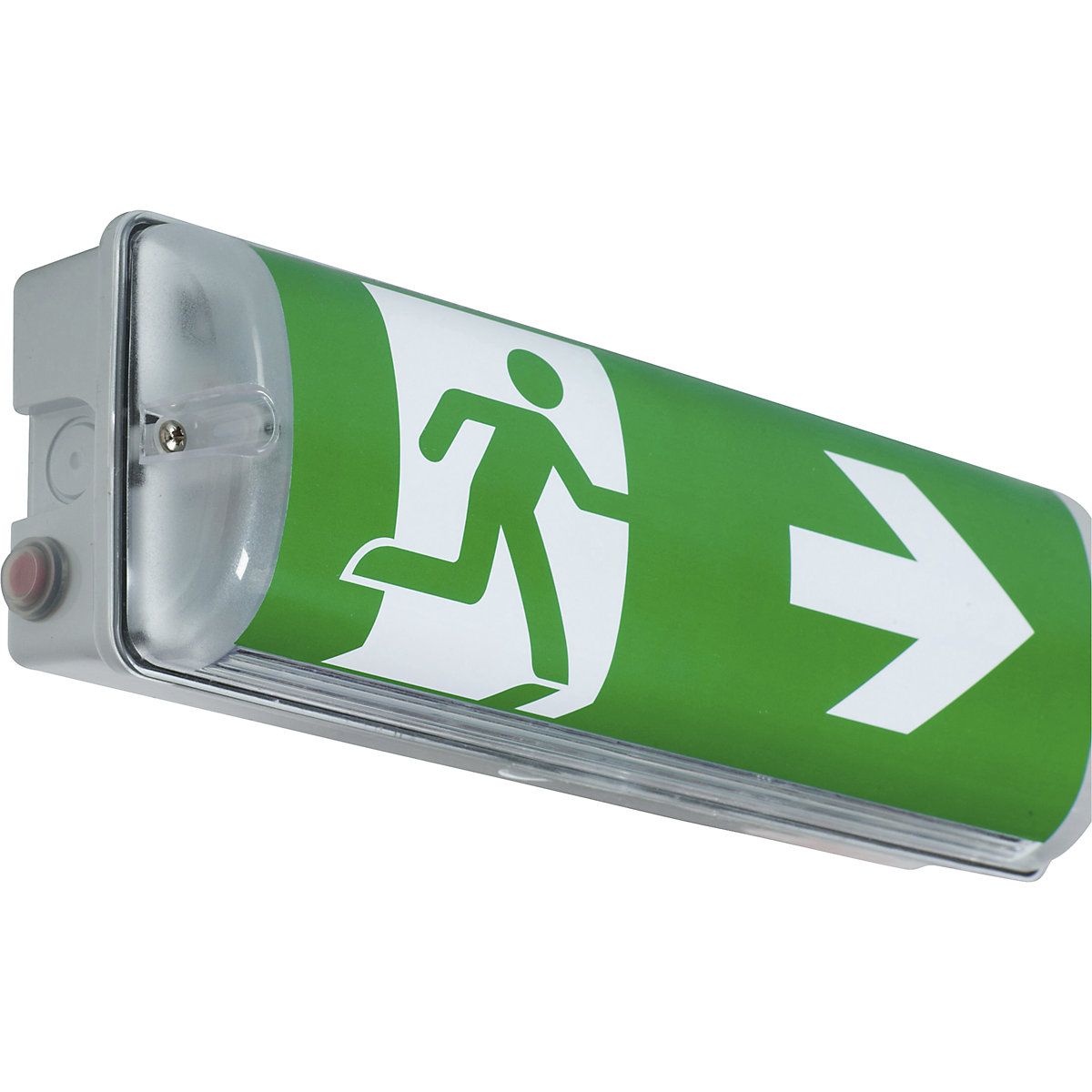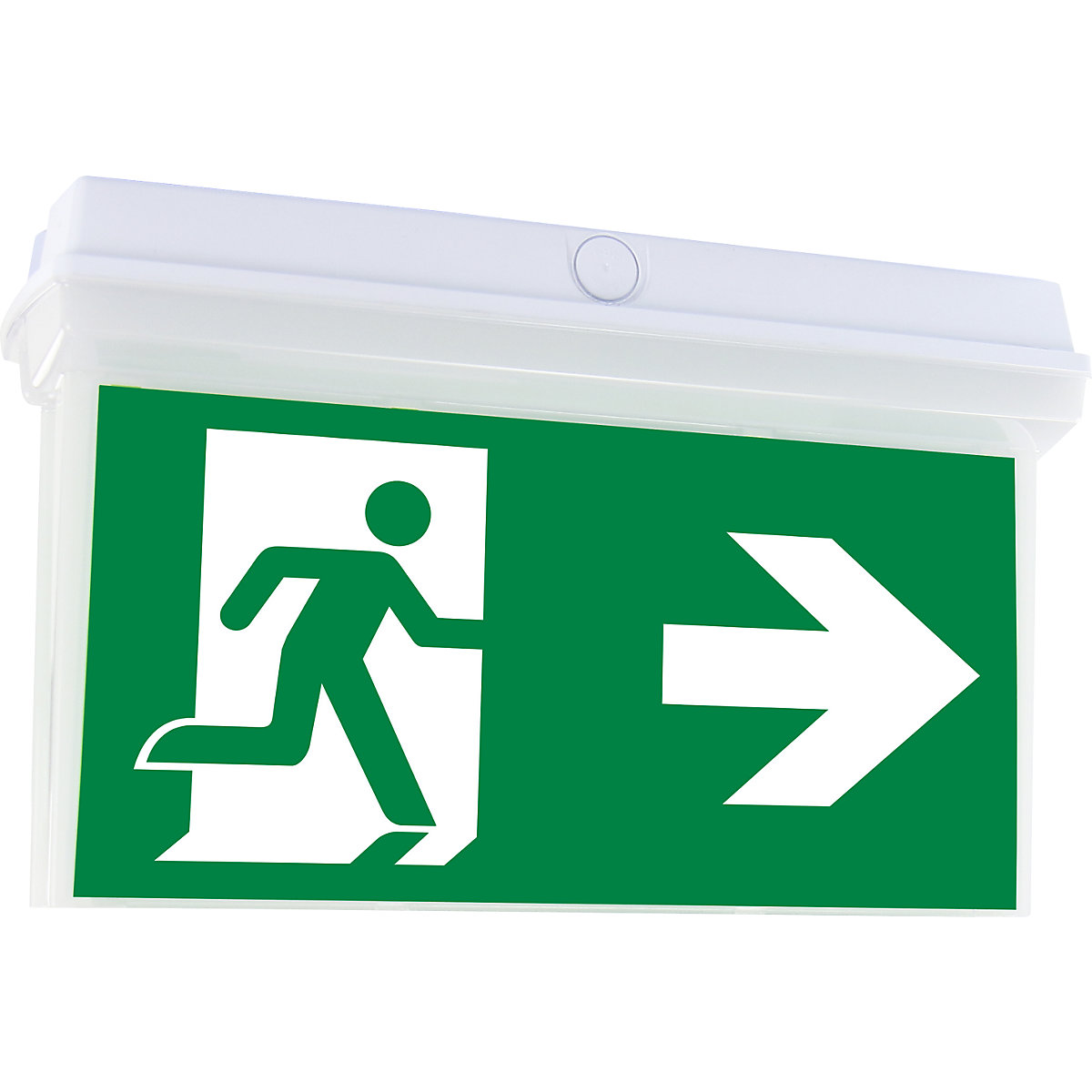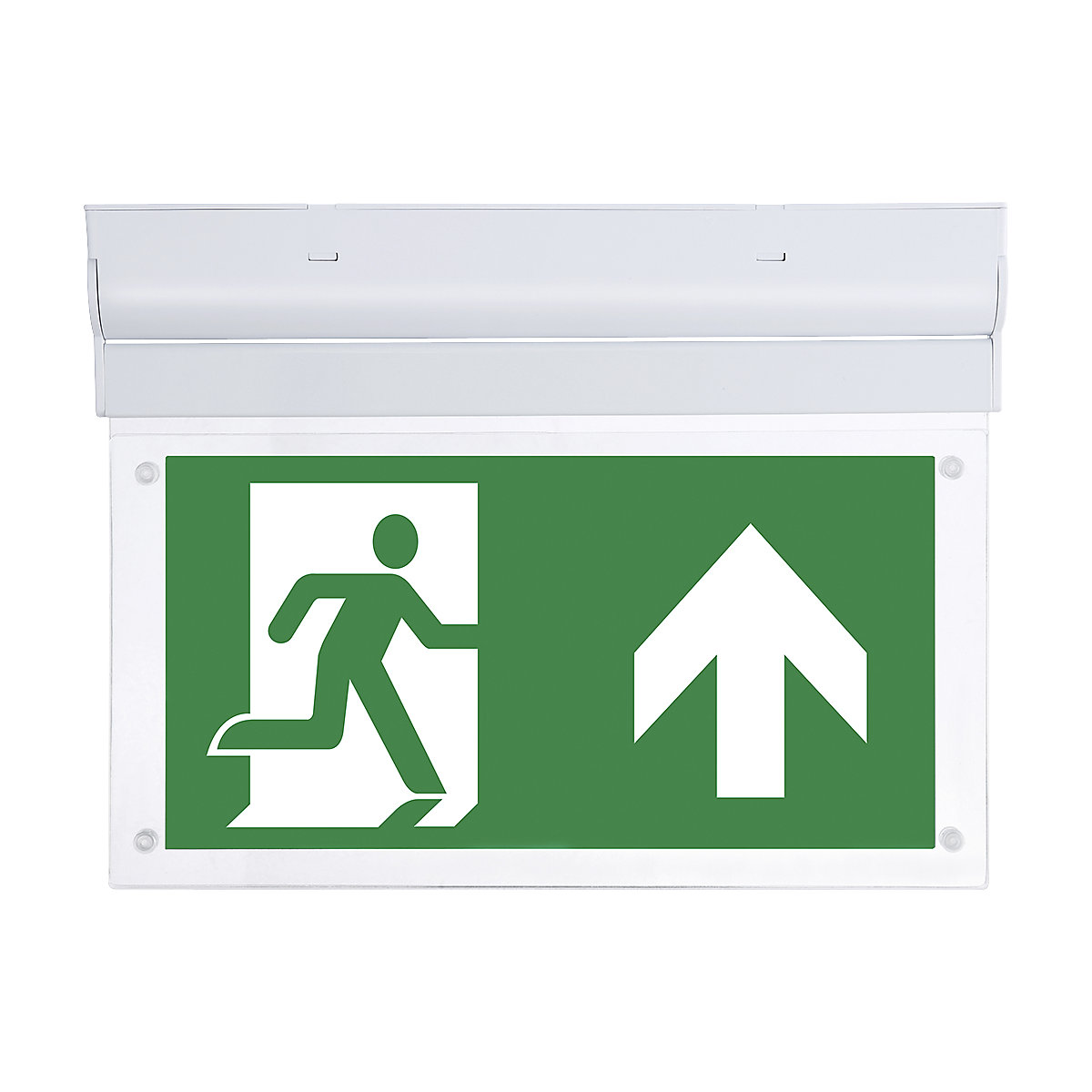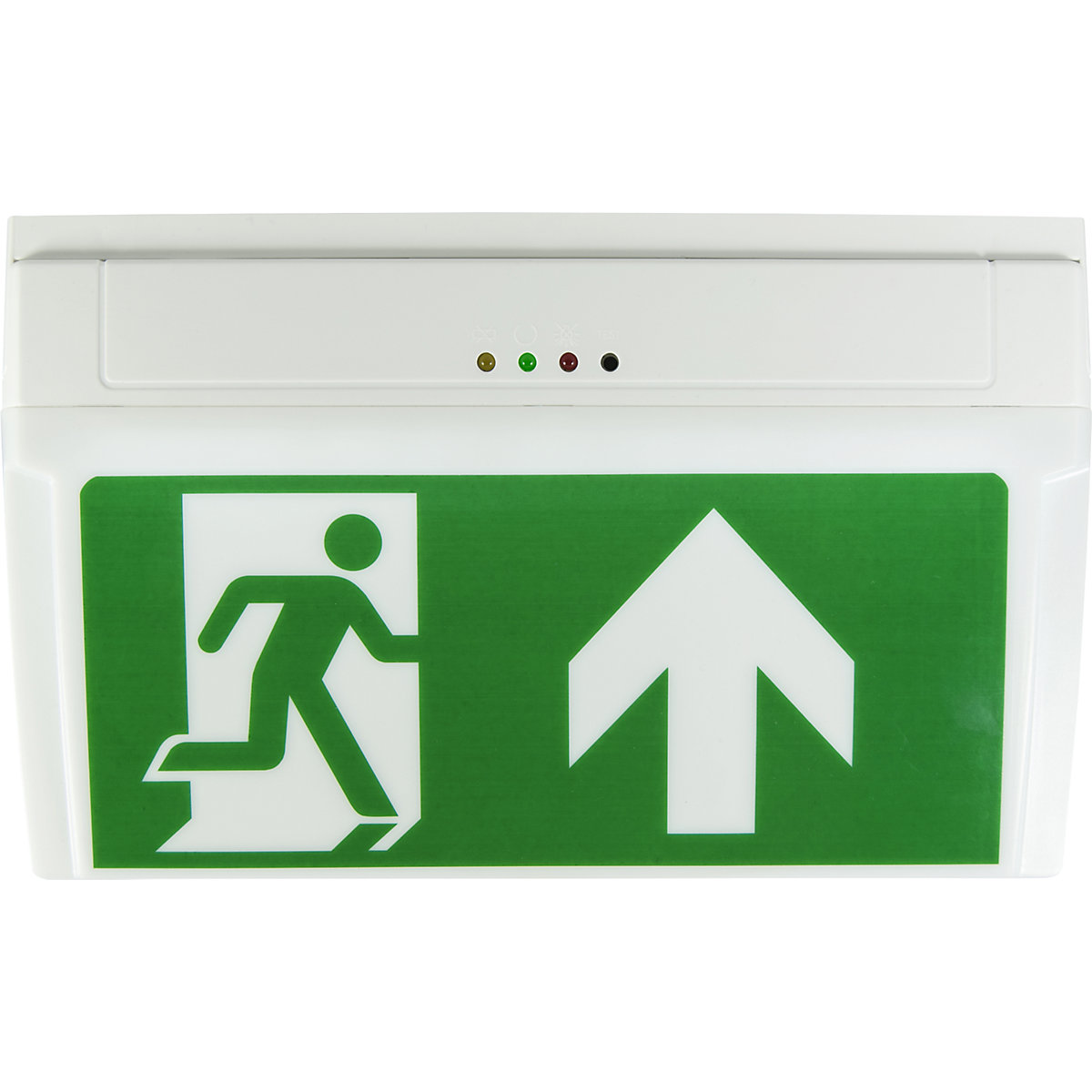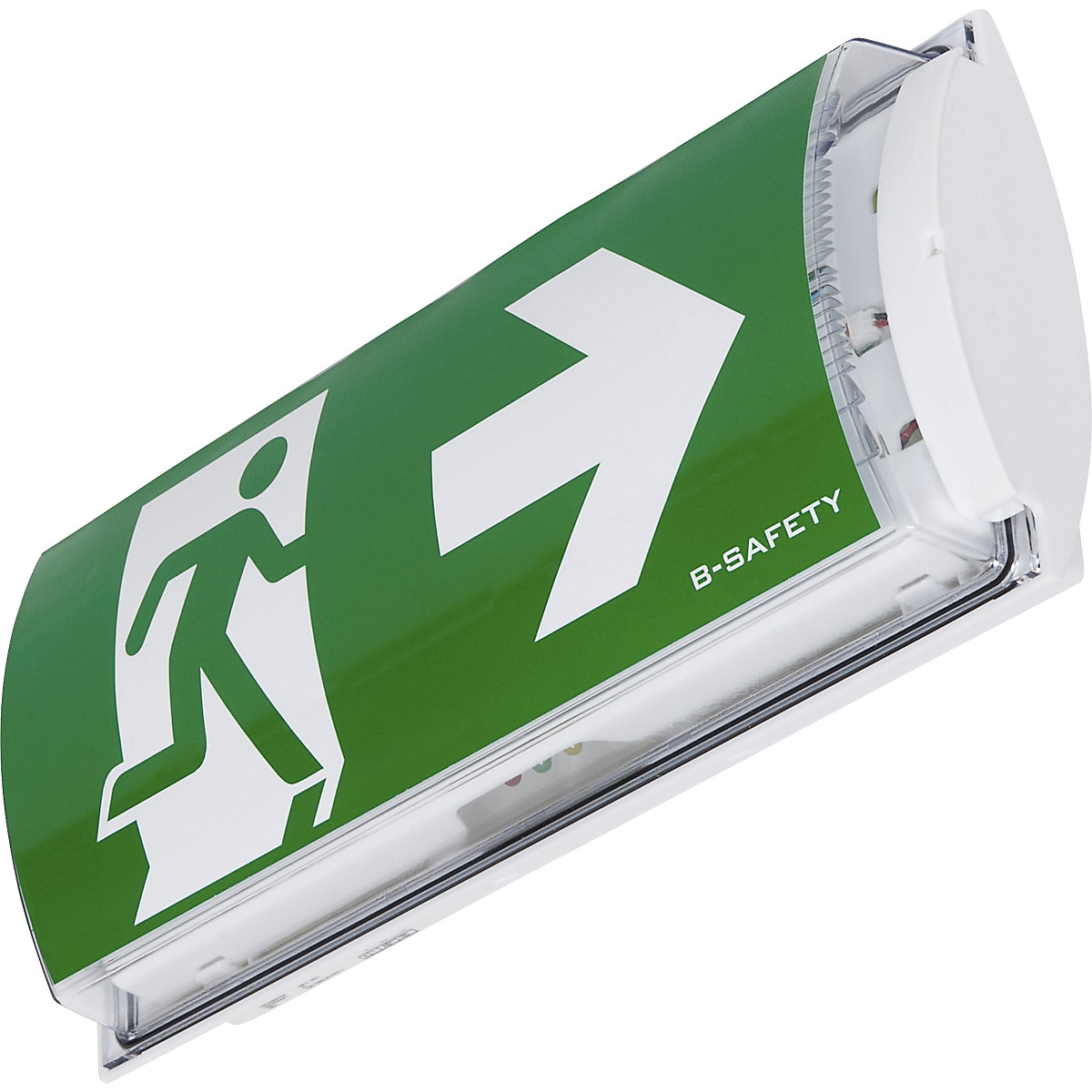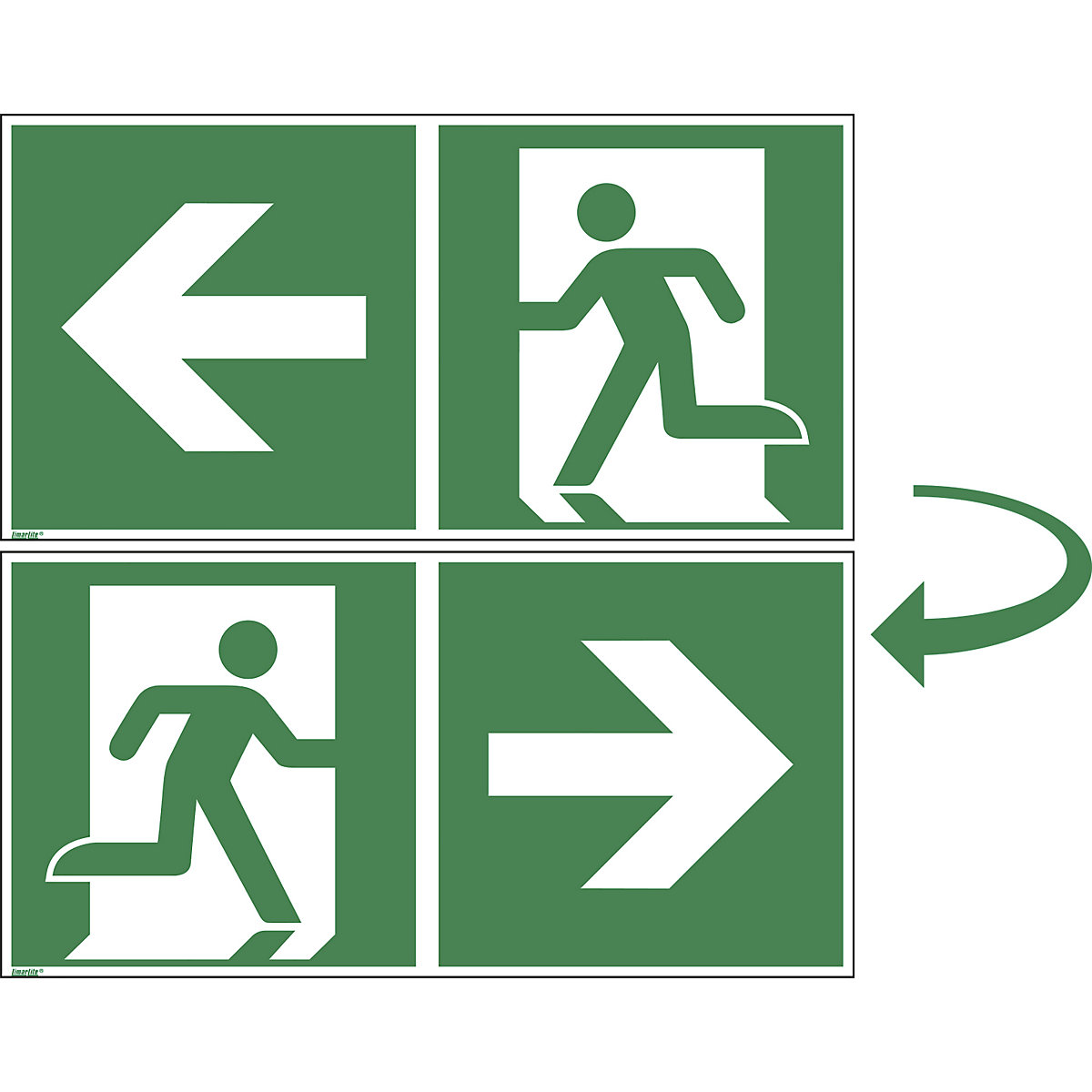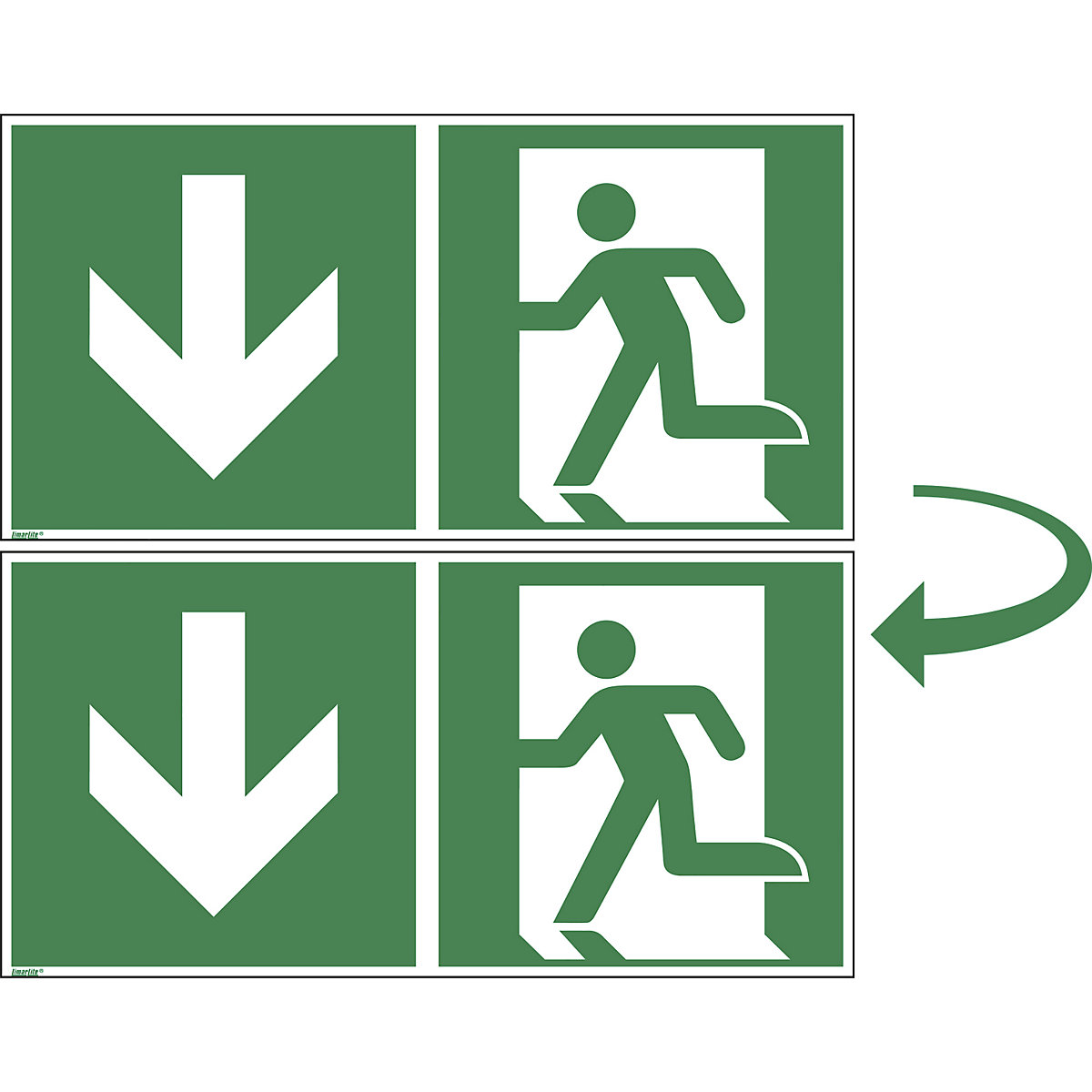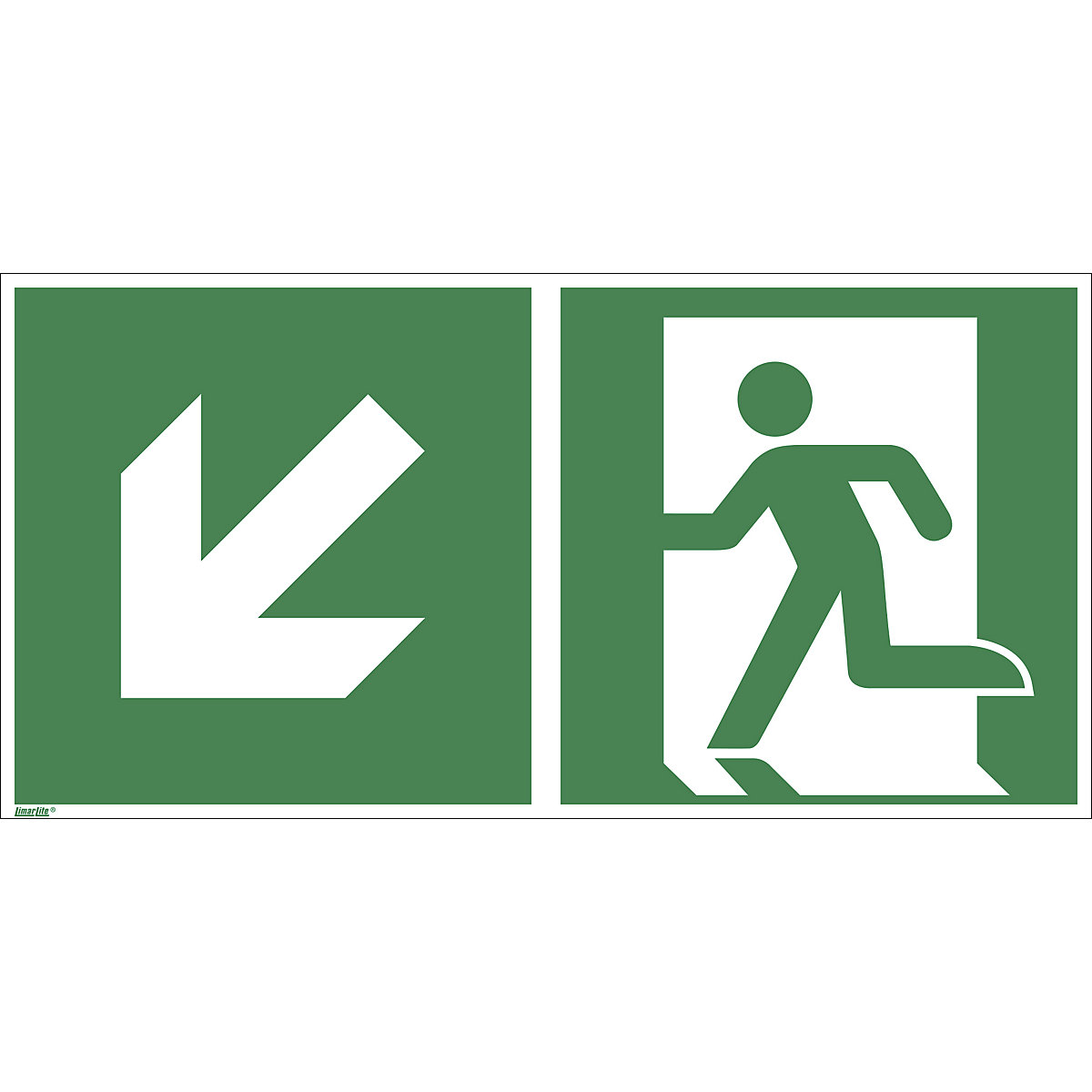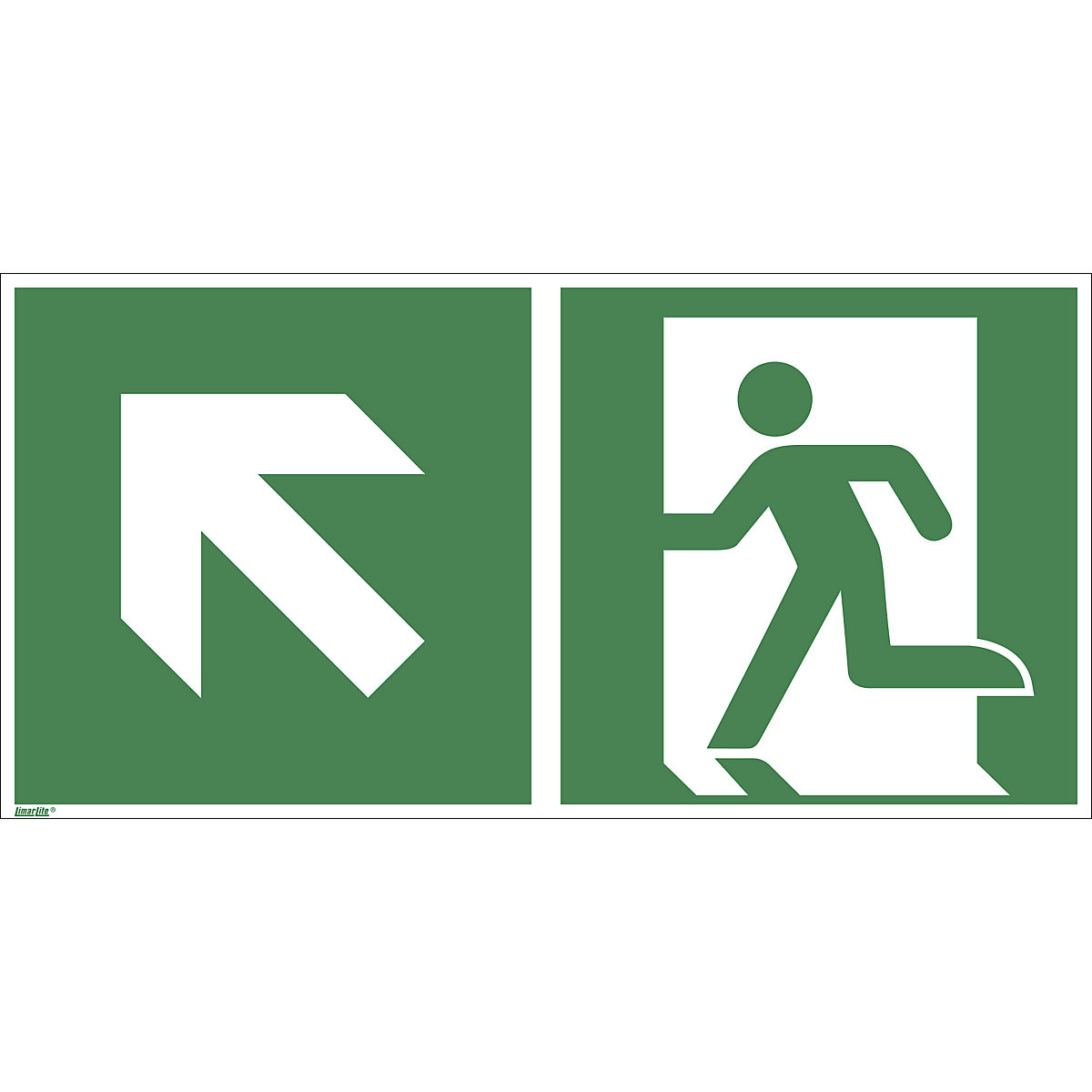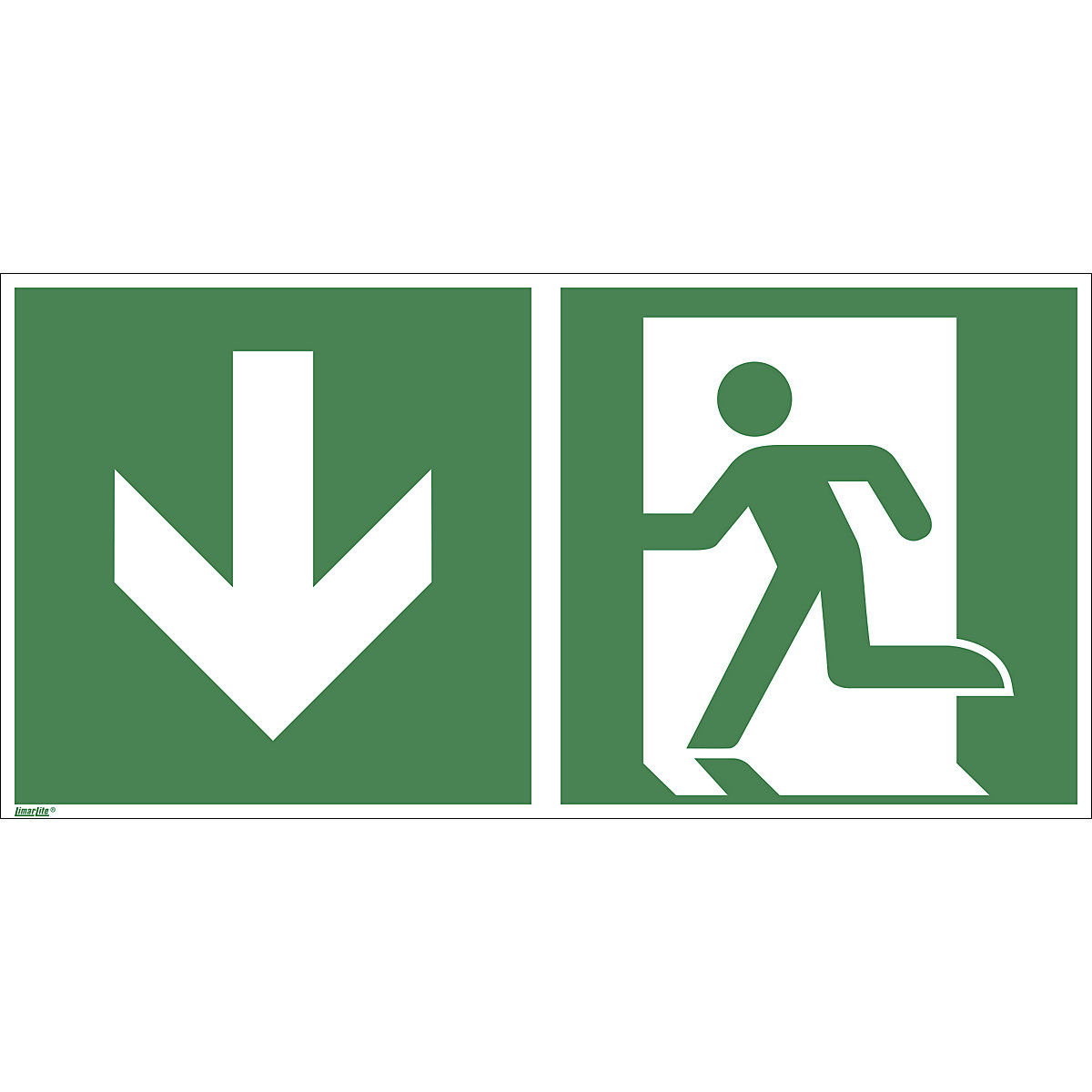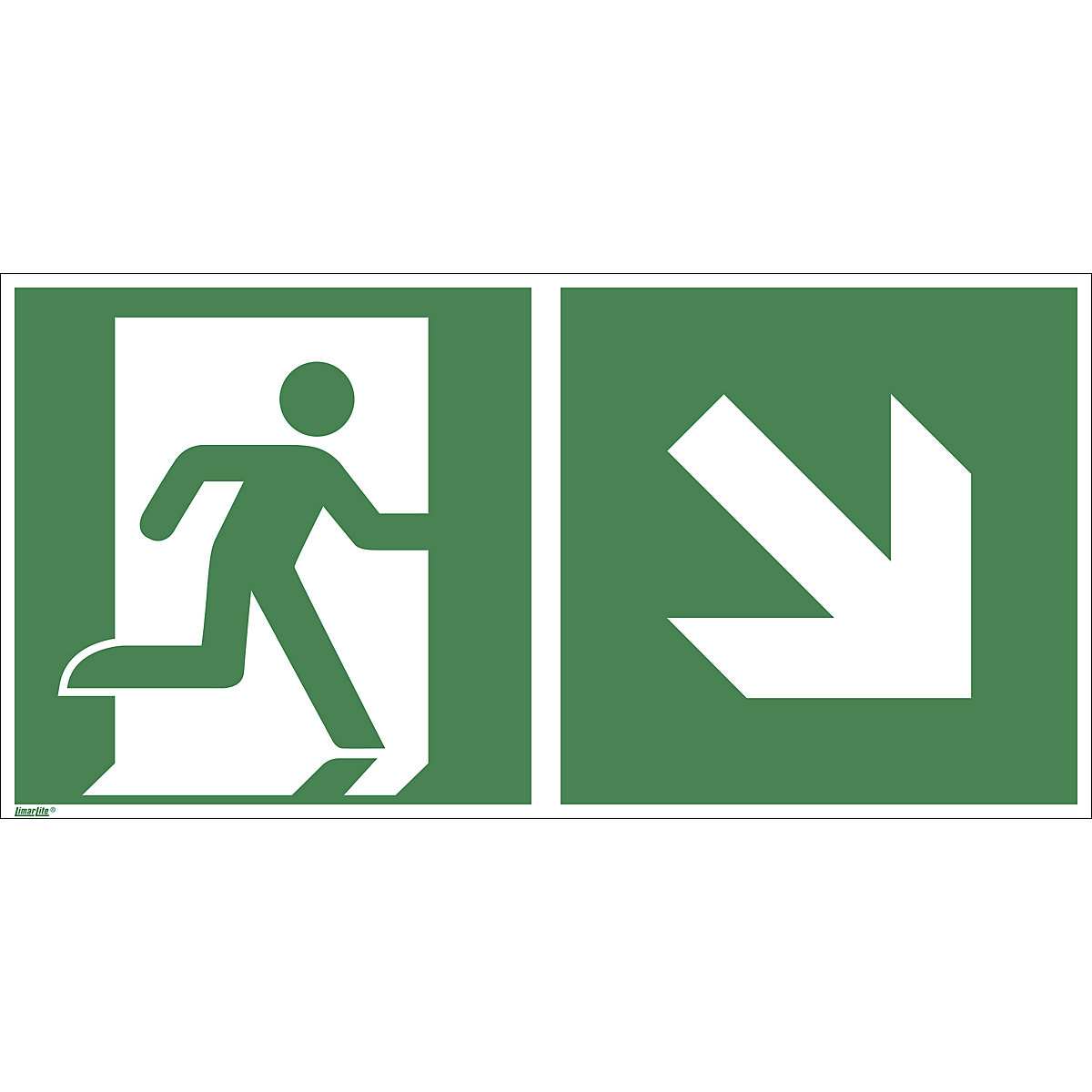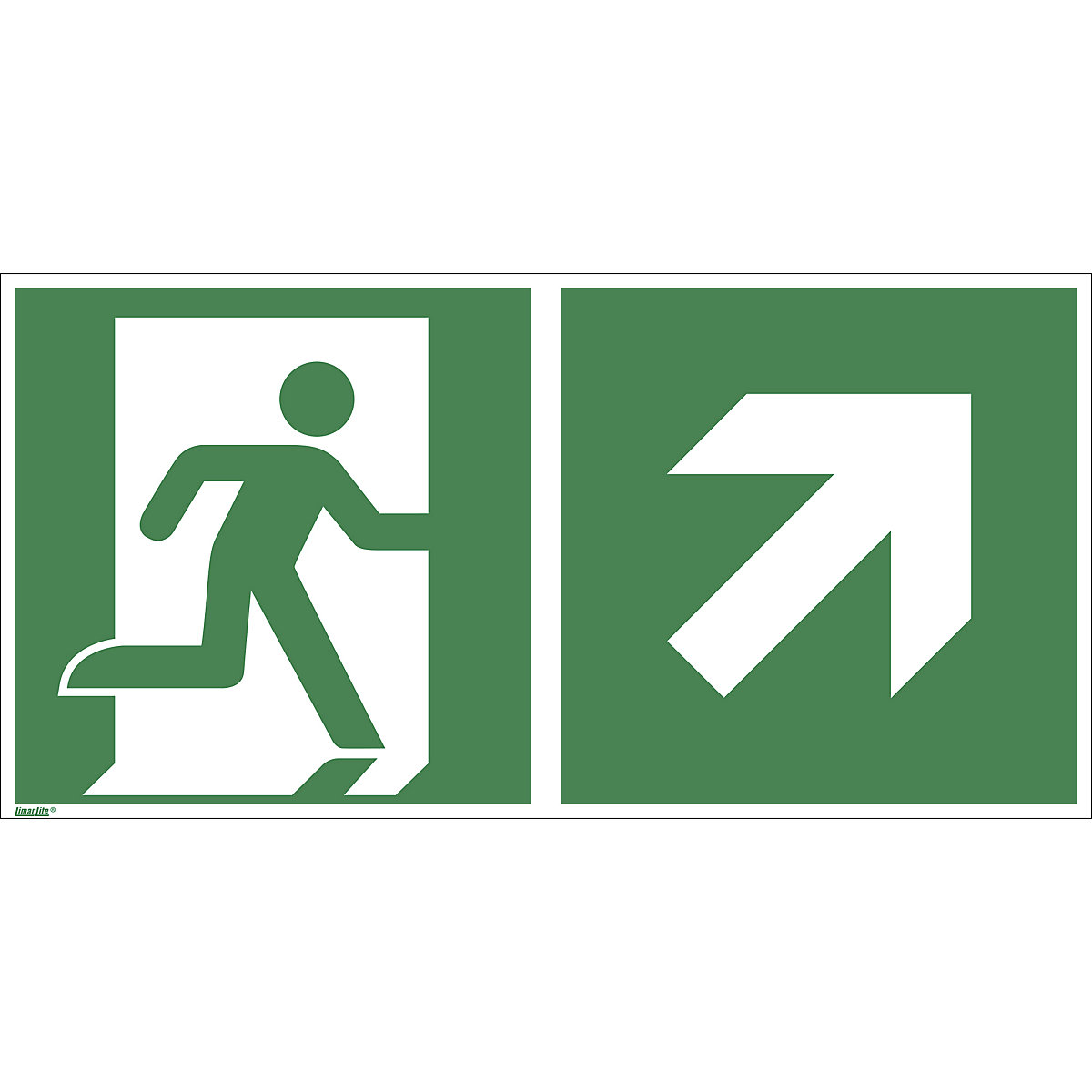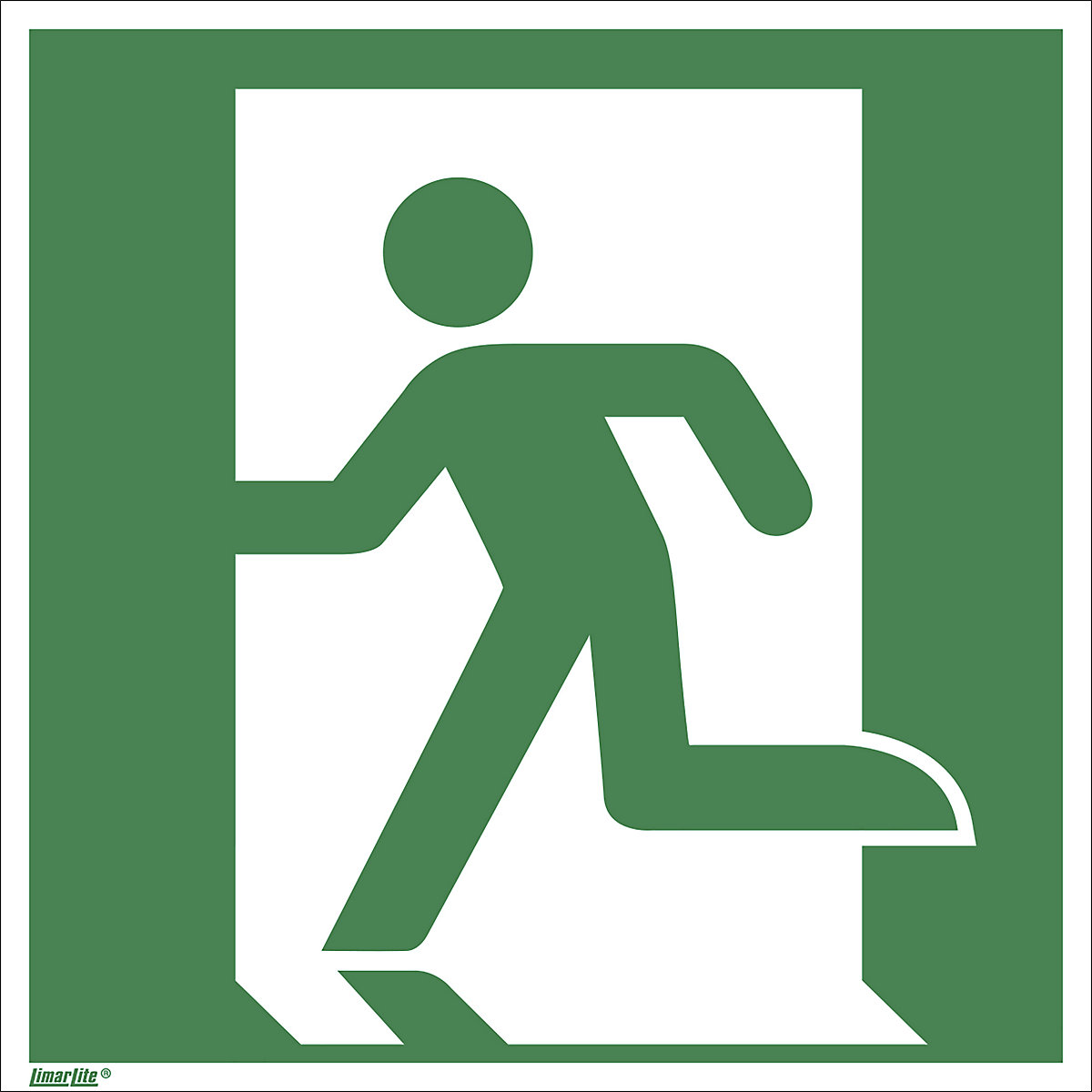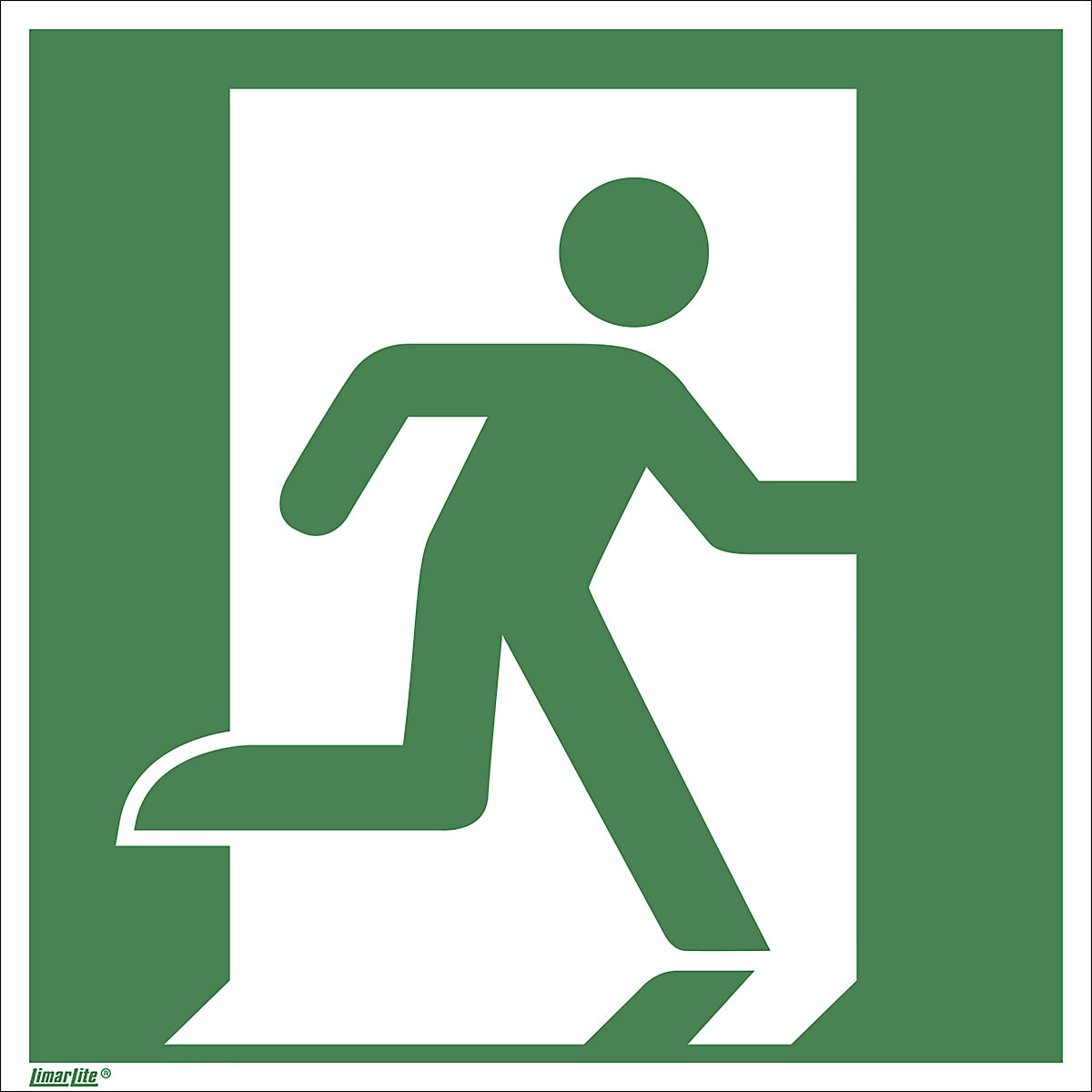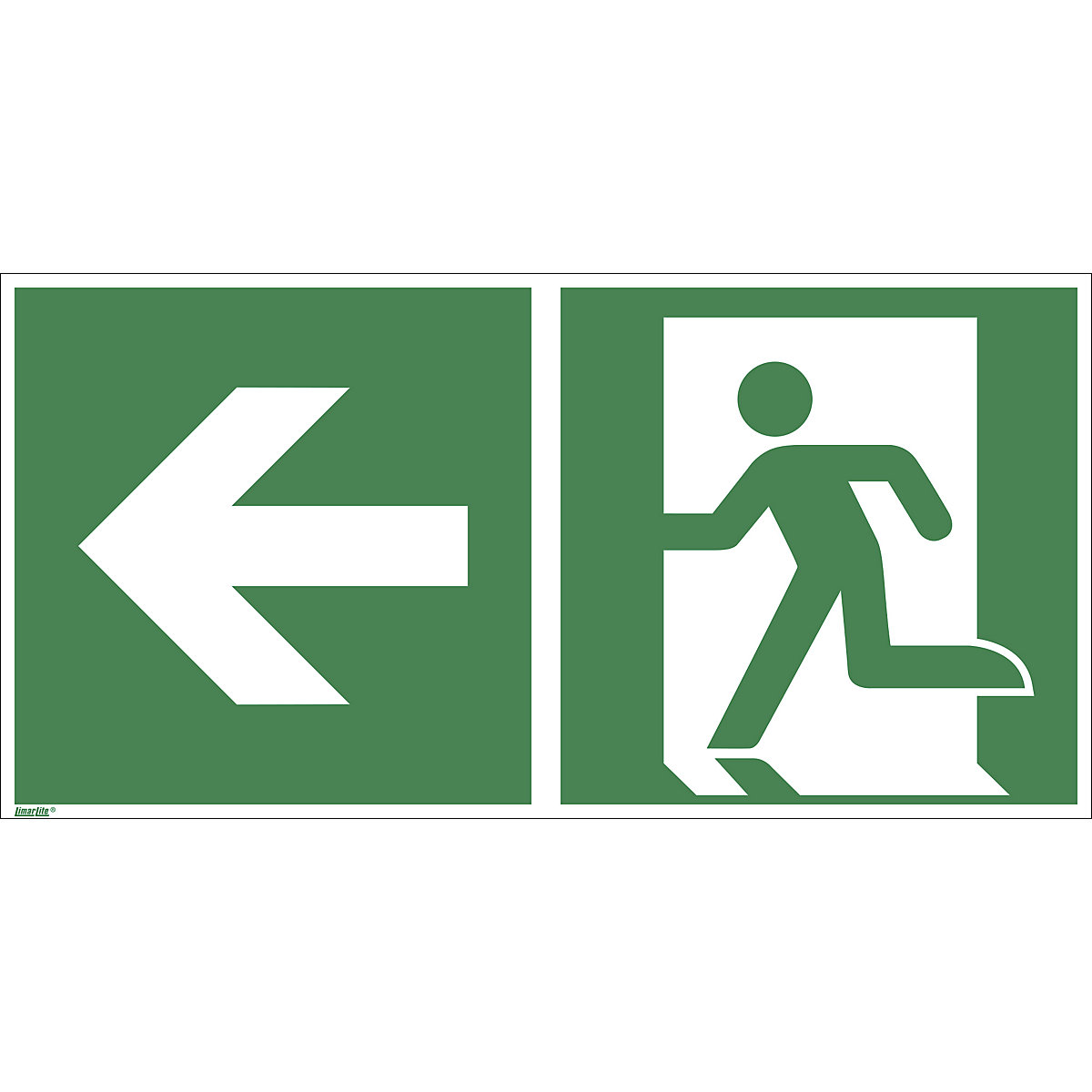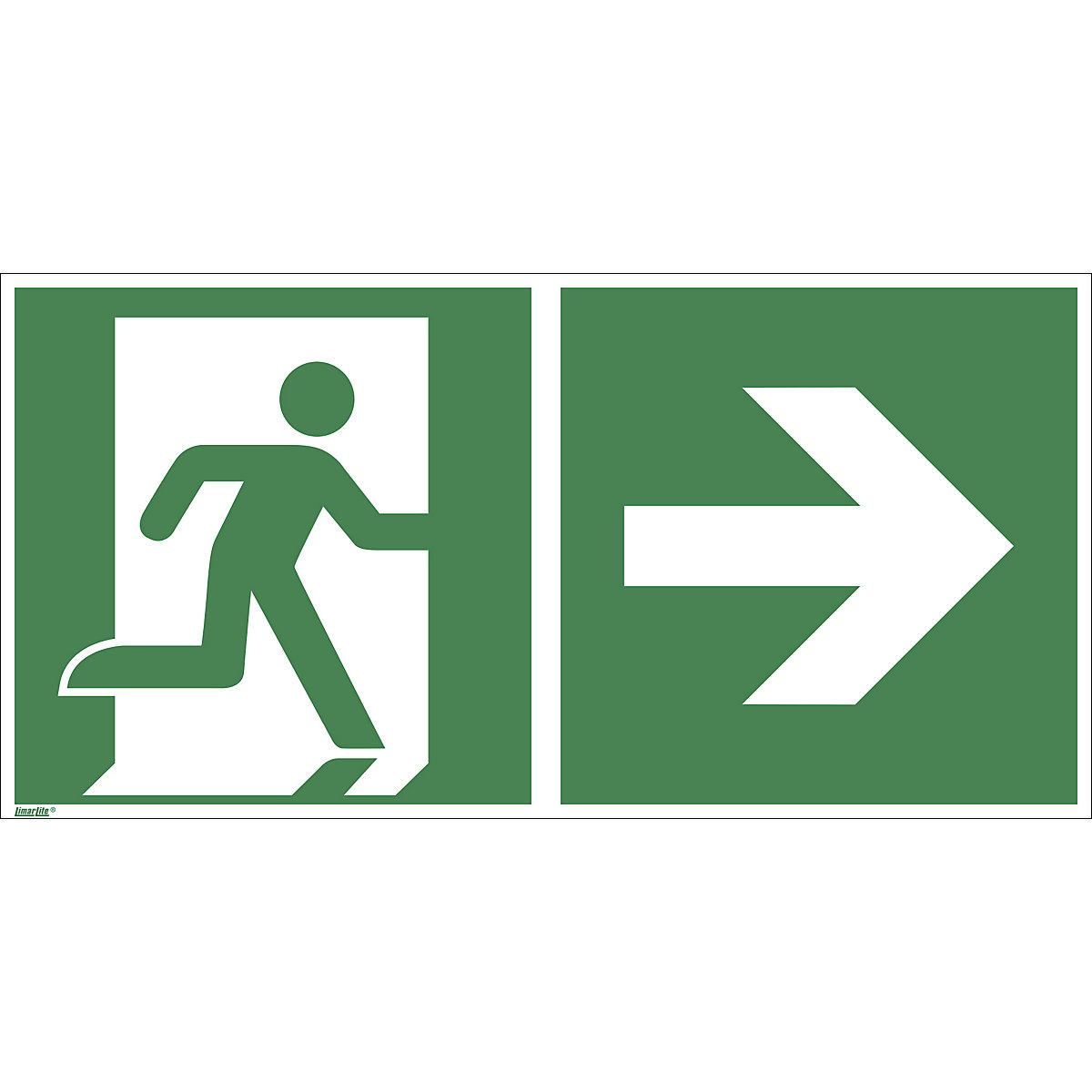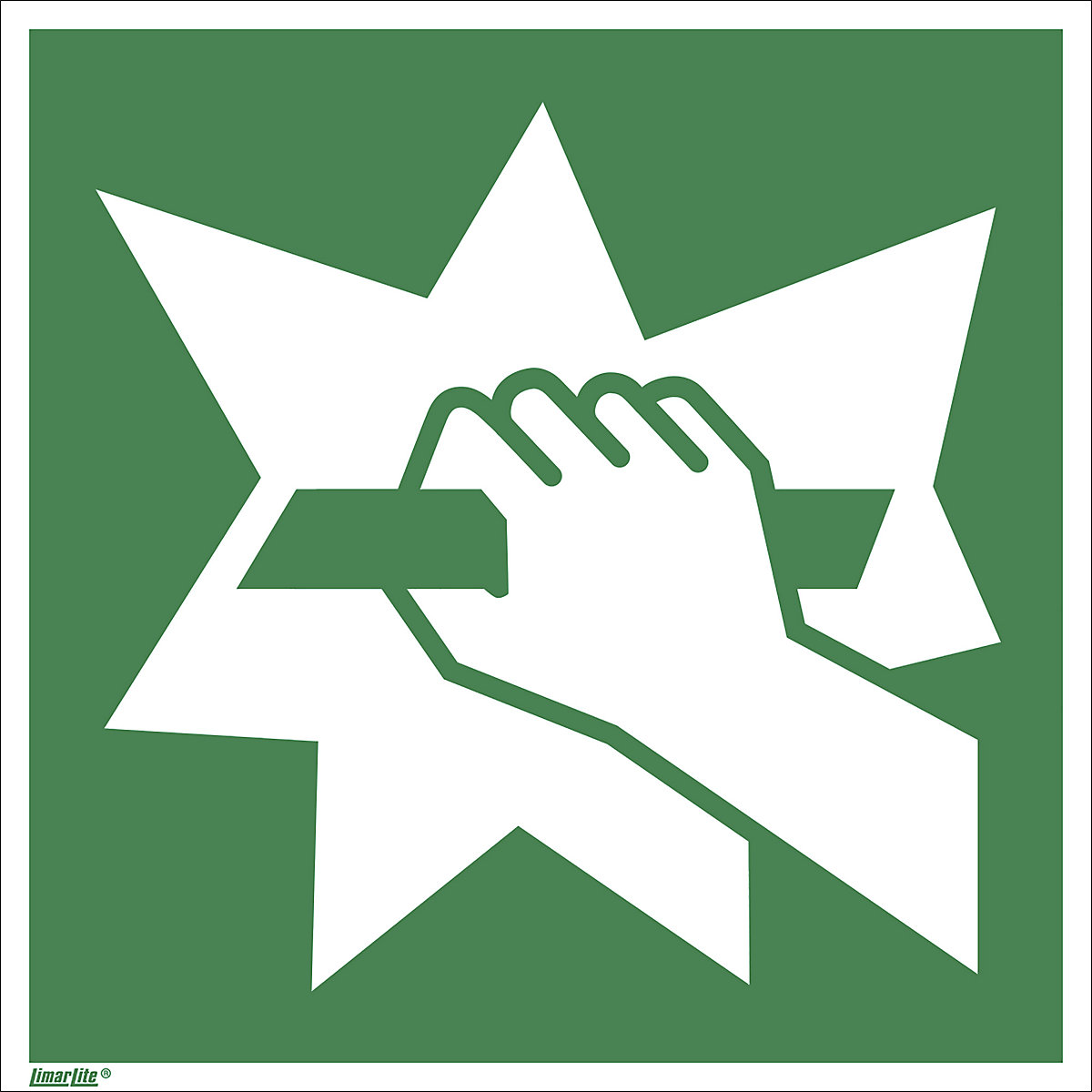Emergency escape signs
Emergency escape signs – help is on its way. Provided that you, as a first responder, find the right signs for orientation. If you do, then you'll find exactly what you need to provide help, or simply find the emergency exit without delay.
Emergencies – knowing the right thing to do
A fire alarm, chemicals in your eye, a deep cut in your finger – where should you go for help? We know most emergency escape signs as green and white signs, which lead us outdoors or to safety in the event of a fire. This is what is known as an emergency escape route. It can also lead you to the emergency shower or to the next eye rinse bottle.
Emergency escape signs do more than just tell you which way to go – as their name indicates, they are a means of escape, making them vital to survival. And, of course, this is why they are also required by law. Both workplace directives and EN ISO 7010 mandate their use. Europe-wide standards are very important, especially for emergency escape signs, as this ensures that the safety symbols will be universally understood.
Which way do the arrows point?
If an emergency escape sign shows a directional arrow, then everyone should know which direction they need to head in. Since the ASR A1.3 does not provide any clear directions in relation to interpreting the position of the arrow, we've made some notes for you, which you can find here. They are based on international standards and specifications.
- Arrow points to the right: go to the right
- Arrow points to the left: go to the left
- Arrow points upwards: walk straight ahead (if applicable, through a door) or walk one floor higher
- Arrow points down: go one floor lower/down (please note: this sign has been used for ''walking straight ahead'' in the past*.)
- Arrow points diagonally to the top right: go up to the right or cross an open space by going to the right in a diagonal direction
- Arrow points diagonally to the top left: go up to the left or cross an open space by going to the left in a diagonal direction
- Arrow points diagonally to the bottom right: go down to the right
- Arrow points diagonally to the bottom left: go down to the left
*Note: ISO 16069 specifies that the arrow pointing upwards is to be interpreted as an instruction to walk ''straight ahead''. This also applies when it is posted above doors and emergency exits. If you are still using the emergency escape sign showing an arrow pointing downwards, then it is important to change it. This is the only way to ensure than directional signs are understood correctly in the event of an emergency.
What are emergency escape signs used for?
Emergency escape signs mark emergency exits, emergency escape routes and first aid facilities. The objective is to ensure lives are saved, or to provide assistance quickly, in the event of an accident.
Luminescence is important
To ensure that emergency escape routes remain visible even when it's dark, emergency escape signs must be photoluminescent as required by DIN 67510. This standard stipulates the minimum duration for which fluorescence must be maintained. In addition, the visibility of the signs must be guaranteed by ensuring they are always affixed at an appropriate distance. You can find out more about this in our purchasing guide to recognition ranges.
These products may also be of interest to you:
Guidance systems | Customer guidance system | Floor markings | Barrier chains | Tape belts | Edge protection brackets | CEMO sump trays | Lutz pumps


